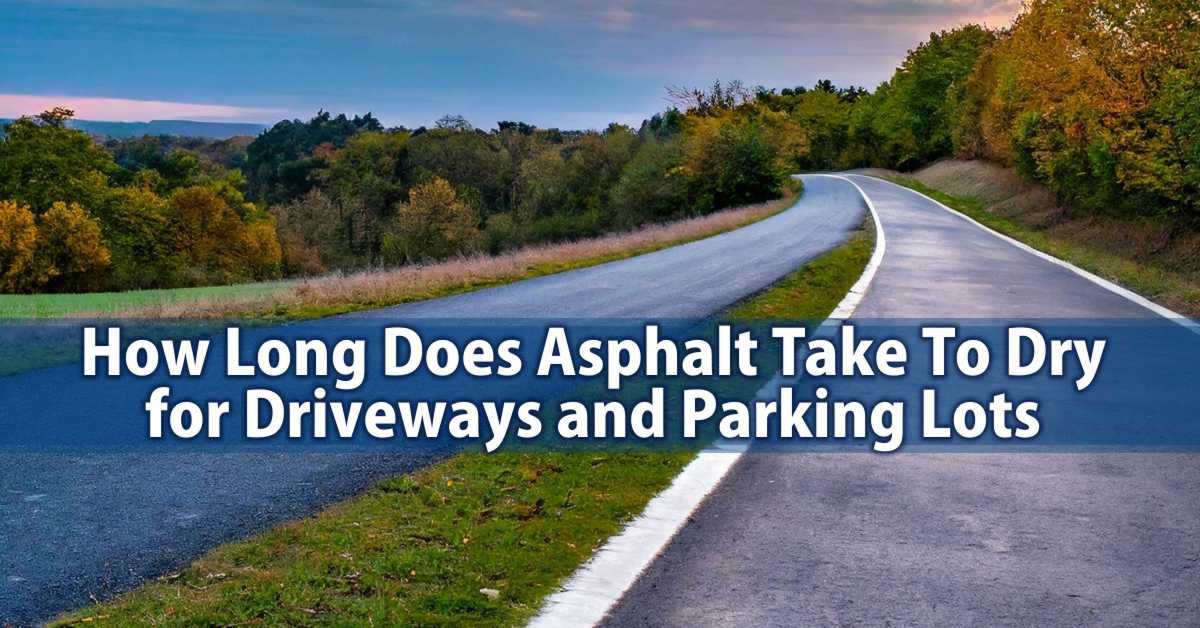If you’ve just had a new asphalt driveway or parking lot paved, you’re probably wondering: How long until it’s ready to use? The short answer is: At least 5-7 days for light traffic, but full curing takes weeks. However, the exact time depends on weather, thickness, and how the pavement will be used.
Let’s break it down clearly—no fluff, just the key details you need.
How Long Before You Can Drive or Park on New Asphalt?
Here’s a simple timeline based on real-world experience:
First 24 Hours – No foot traffic (even shoes can leave marks).
3 Days – Light foot traffic okay, but still too soft for vehicles.
5-7 Days – Cars can drive on it gently (avoid sharp turns or hard braking).
10-14 Days – Safe for normal use (parking lots can handle daily traffic).
30 Days – Ready for sealcoating (applying it too early causes peeling).
1-6 Months – Fully cured, reaching maximum hardness.
Driveways vs. Parking Lots:
Driveways (2-3 inches thick) usually cure faster—around 5-7 days for cars.
Parking Lots (3+ inches thick, heavier traffic) need 7-14 days before allowing trucks or frequent use.
What Affects Drying Time?
Four main factors decide how fast your asphalt hardens:
Temperature – Warm weather (70°F+) speeds curing; cold (below 50°F) slows it.
Humidity – High humidity = slower drying. Avoid paving if rain is expected within 48 hours.
Sunlight & Wind – Sunny, breezy days help moisture evaporate faster.
Thickness – Thicker layers (like in parking lots) take longer to dry inside.
Bad weather? If it rains right after paving, add 2-3 extra drying days.
Common Mistakes to Avoid
Driving on it too soon – Causes ruts, cracks, and uneven spots.
Sealcoating early – Wait at least 30 days, or the sealer won’t stick.
Parking heavy vehicles – Trucks or RVs should wait 2+ weeks.
“But I need to use my driveway!”
If you must drive on it early:
Go slow (under 5 mph).
Avoid sharp turns or sudden stops.
Use plywood or steel plates under tires to spread the weight.
Contractor Tips for Best Results
(For those hiring a paving company)
Ask about warm-mix asphalt – It cures faster in cool weather.
Check compaction – Proper rolling ensures fewer air pockets, meaning stronger pavement.
Plan ahead – Avoid late-season paving if freezing temps are coming.
What You Might Not Know About Asphalt Drying and Curing
Let’s clear up some common but unspoken assumptions about asphalt drying times:
Driveways vs Parking Lots – Why Times Differ
Parking lots use thicker layers (3-4 inches) to handle heavy vehicles, so they take longer to cure than driveways (typically 2-3 inches)
Even if they look dry on top, the deeper layers are still curing
Driveways get lighter use, so they can handle traffic sooner
Weather’s Hidden Impact
Hot sunny days can make the surface seem ready when it’s not
Rain doesn’t just delay work – it can wash away oils if it hits fresh asphalt
Cool nights slow curing even if days are warm
Drying vs Curing – What’s the Difference?
Drying (first few days): Surface becomes firm to touch
Curing (weeks/months): Internal hardening process continues
Just because you can walk on it doesn’t mean it’s cured
What This Means For You
If you’re waiting on new asphalt:
Don’t judge readiness just by surface appearance
Check weather forecasts for rain or cold snaps
Plan extra time if your project is:
A parking lot
In cool weather
Thicker than normal
Quick Tips:
For driveways: Wait at least 3 days before light cars
For parking lots: Give it 5-7 days minimum
When in doubt, wait longer – rushed curing causes problems later
Remember: Asphalt keeps hardening for months after paving. The longer you can wait before heavy use, the longer your pavement will last.
FAQs (Quick Answers)
Q: Can I walk on my new driveway after 1 day?
A: Light steps only—no bikes, strollers, or pets running around.
Q: Why does my parking lot still feel soft after a week?
A: Thicker asphalt takes longer. Give it 10-14 days if temps are cool.
Q: What if it rains right after paving?
A: Covering the asphalt helps, but expect 2-3 extra drying days.
Q: When can I sealcoat?
A: Wait 30 days—applying too early ruins adhesion.
Final Advice
Good asphalt takes patience. Rushing the curing process leads to cracks, dips, and expensive fixes later. If you’re unsure, wait an extra day or two—it’s better than dealing with damage.
